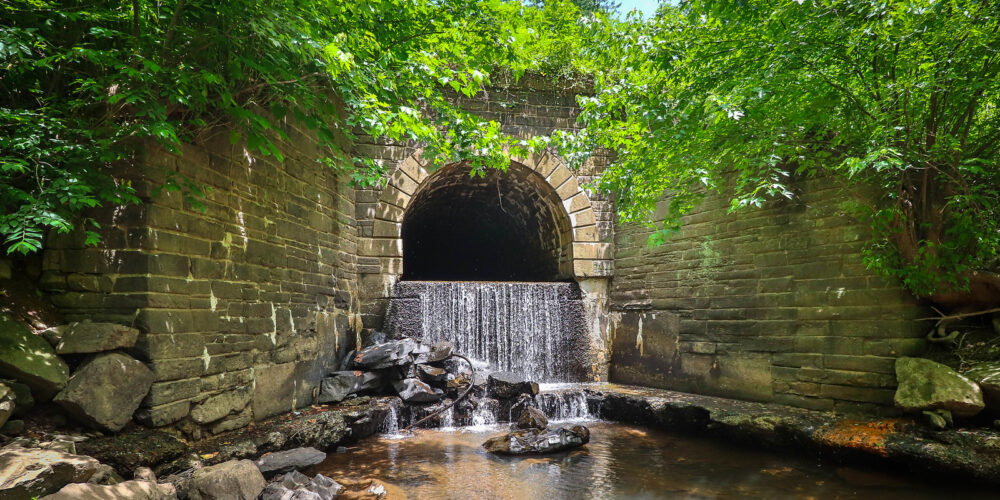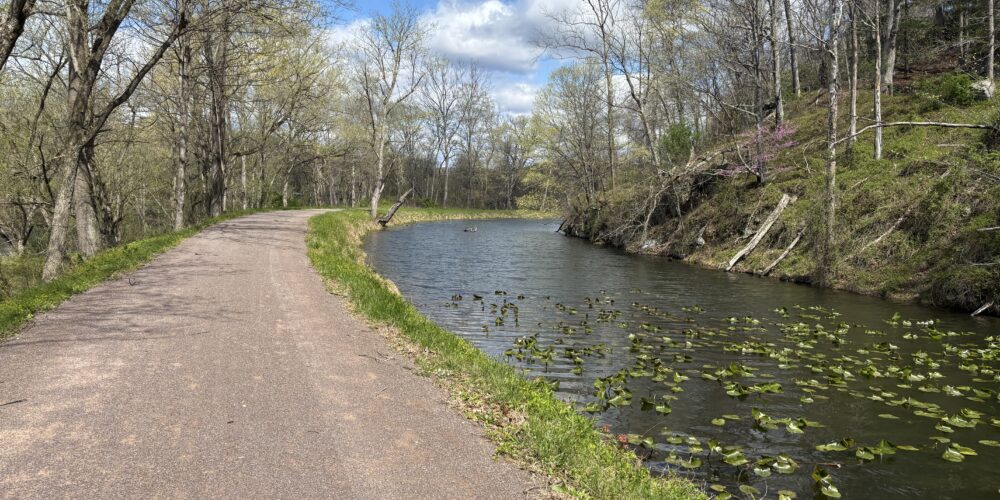Towpath Forever
The C&O Canal’s 184.5-mile-long towpath travels from Georgetown, in the District of Columbia, to Cumberland, Maryland, and is the heart of the C&O Canal National Historical Park. Through the Towpath Forever Initiative, the Trust raises funds to preserve towpath continuity, its historic structures, and the improvement of visitor experience along this key component of Maryland’s transportation trail network. The Towpath Forever Initiative is critical to maintaining the integrity, public enjoyment, and connectivity of this important transportation and recreational resource, including major access points, such as the Capital Crescent Trail.
Towpath Forever encourages philanthropy and volunteerism to ensure the towpath and the park’s historic structures are repaired and kept in good condition; lifelong stewards are created through educational programming; and recreational opportunities are enhanced. Funds through Towpath Forever include support for historic culvert restoration, towpath rehabilitation, preservation of historic structures, and trail maintenance.

Underlying the 184.5-mile C&O Canal towpath, more than 200 culverts were built to pass smaller creeks and streams under the canal and into the Potomac River. These engineering marvels may not be readily seen as we bike and hike the trails, but they are critical for towpath continuity. Culverts are an integral part of the C&O Canal’s historical, cultural, and recreational resources. They remain a testament to the hard work and ingenuity of the canal’s first builders and are a reflection of the creativity, dedication, and skill of the National Park Service staff today.

Folks walking and biking along the rehabilitated miles of towpath are enjoying a whole new experience – gone are the rocks, roots, and ruts, gone the erosion and washouts, gone the deep muddy wallows. Instead, a smooth, firm resurfaced towpath carries visitors safely and trouble-free along the C&O Canal. Since 2018, when the project first began, the Trust, in partnership with the National Park Service and the State of Maryland’s Transportation Alternatives Program (TAP), has rehabilitated over 120 miles of the towpath.
Preserving the park starts with the towpath. Help secure towpath continuity by supporting our Towpath Forever Initiative.
Questions? Please contact our development team at [email protected].
FREQUENTLY ASKED QUESTIONS
Will the whole towpath be rehabilitated?
Following an engineering study done in 2016 with the assistance of the Allegheny Trail Alliance (ATA), the towpath was identified as urgently needing rehabilitation. The park has plans to resurface the towpath in sections, with priority on areas where conditions of the trail have been most affected by potholes, drainage issues, roots, etc.
Which sections of the towpath have been identified for rehabilitation?
Completed in 2019: Mile 30.8 (Edwards Ferry) to Mile 35.5 (Whites Ferry); Mile 54 (Brunswick Family Campground) to Mile 72.8 (Lock 38/Shepherdstown Bridge) (Completed in 2019)
Completed in 2020: Mile 42.2 (Monocacy Aqueduct) to Mile 54 (Brunswick Family Campground)
Completed in 2021: Mile 22.1 (Violettes Lock) to Mile 30.8 (Edwards Ferry); Mile 35.5 (Whites Ferry) to Mile 39.3 (Lock 26); Mile 16.64 (Lock 21) to Mile 22.9 (Seneca Creek)
Completed in 2021: Mile 72.8 (Lock 38/Shepherdstown Bridge) to Mile 86.9 (Big Slackwater boat ramp)
Completed in 2022: Mile 137.8-140.7 (Western Maryland Rail Trail Towpath Connector)
Current Project: Paw Paw Tunnel (mile 156) to Spring Gap (mile 173)
Summer 2024: Big Pool (mile 112) to Licking Creek (mile 116)
Future Project: Spring Gap (Mile 173) to Cumberland (Mile 184.5)
Future Project: Mile 173 (Spring Gap) to Mile 184.5 (Cumberland)
Where can I find the most updated information about towpath rehabilitated?
We do our best to update this page with the latest information, but we acknowledge that may be delayed in posting updates on completed on ongoing projects. For more information on the most recent projects, check the park’s Current Conditions page.
What will the rehabilitation involve?
Removal of rocks, tree roots, and other obstacles.
Removal of grassy median strip.
Grading of towpath to facilitate water runoff.
Re-surfacing with the same crushed stone dust on the Great Allegheny Passage (GAP).
What is the benefit of the new crushed stone dust surface?
The gravel over clay surface, which constitutes the current towpath surface, holds water and is prone to muddiness when wet. Crushed stone dust, particularly on a properly graded surface, does not retain water and hardens with use, making it less likely to erode and rut. It is also easier to maintain over time.
How is the work being funded?
Funding for the project comes from a variety of sources, including the National Park Service and grants from the State of Maryland. Grassroots advocacy from canal enthusiasts has helped the C&O Canal National Historical Park secure over $7 million in funding from Maryland’s Transportation Alternatives Program (TAP) for towpath rehabilitation to date.
How is the C&O Canal Trust supporting the towpath rehabilitation project?
The Trust raises funds to support engineering consulting, supplies and materials, equipment, and other support services. The Trust also rallies support from canal enthusiasts to help advocate for ongoing TAP funding.
What can I do to help?
Make a donation to our Towpath Forever Initiative.
